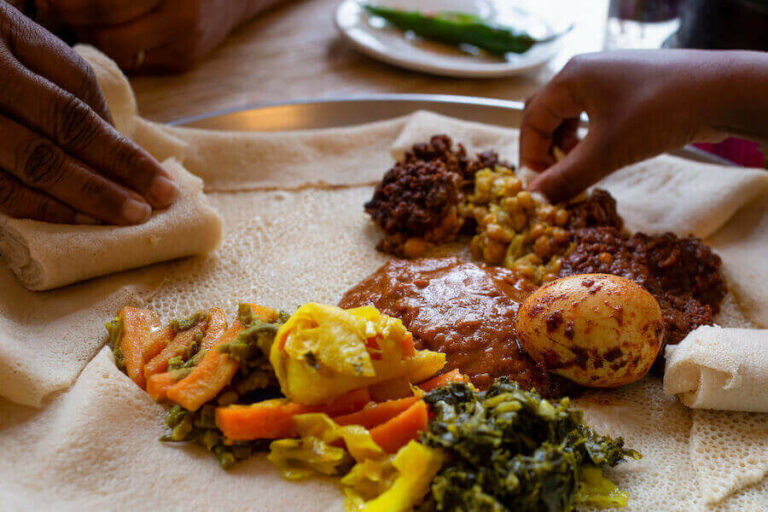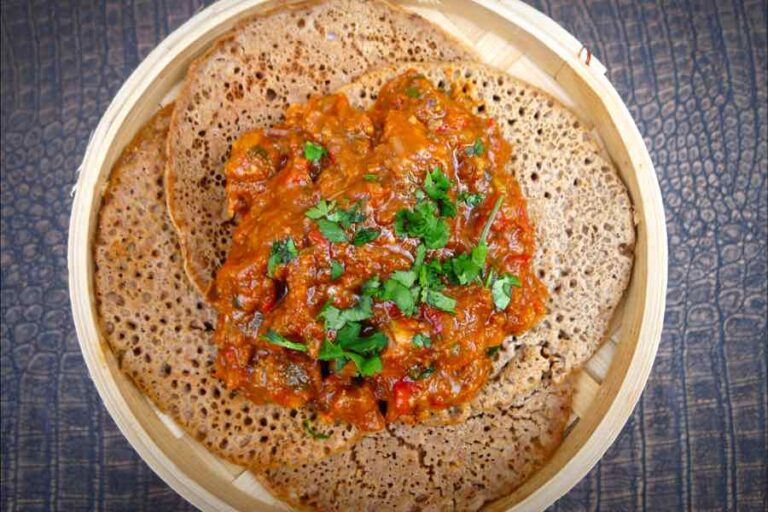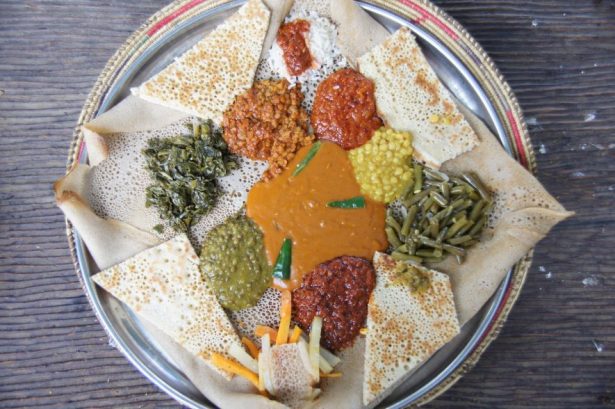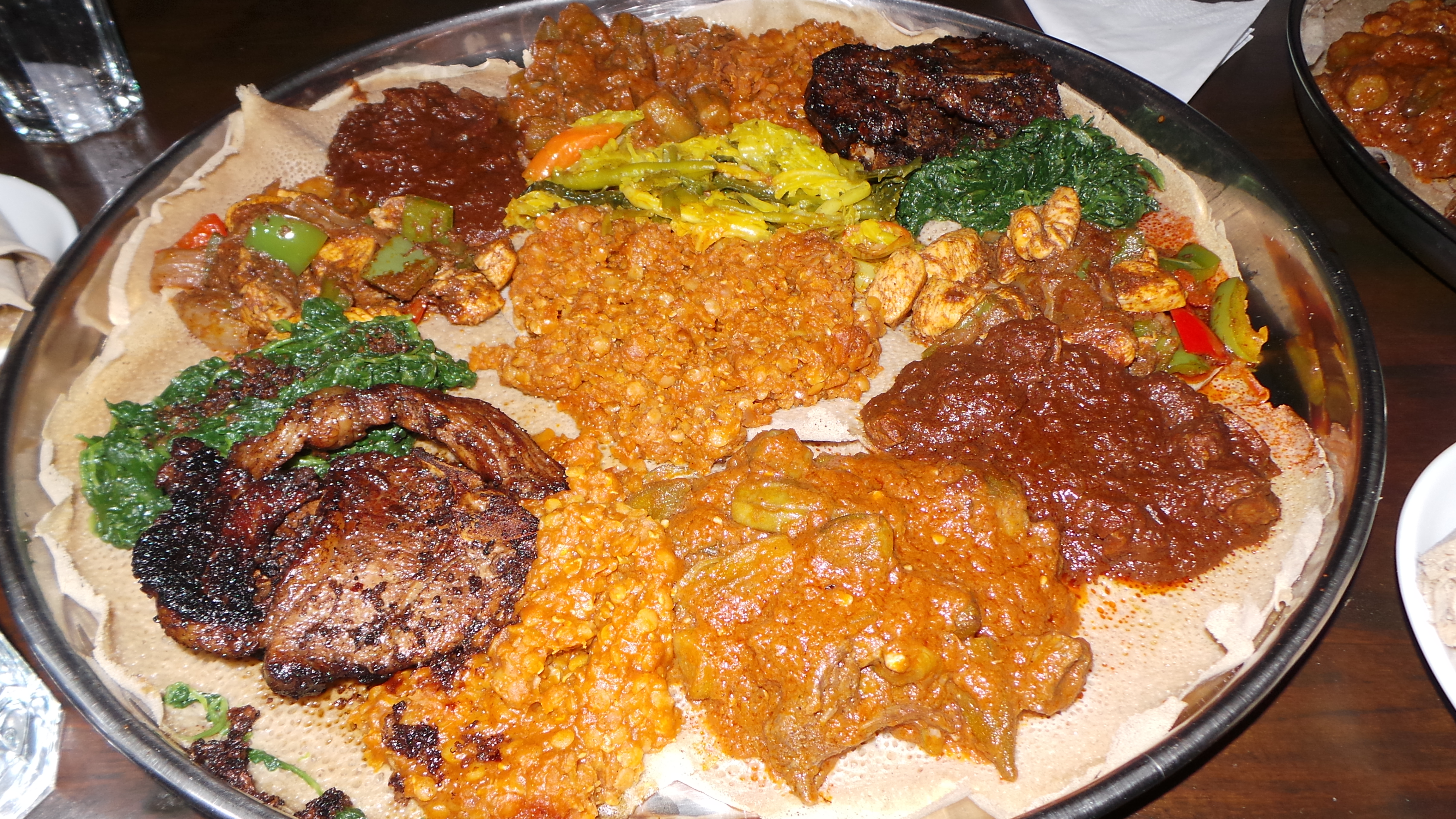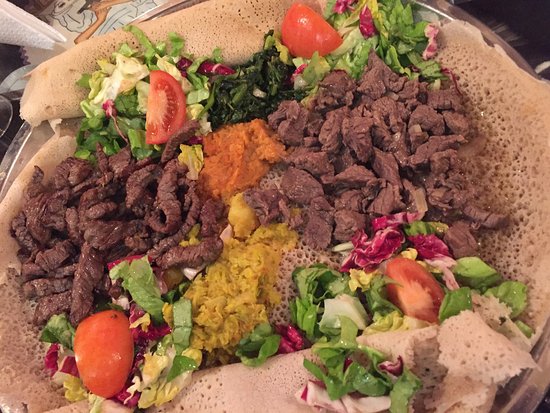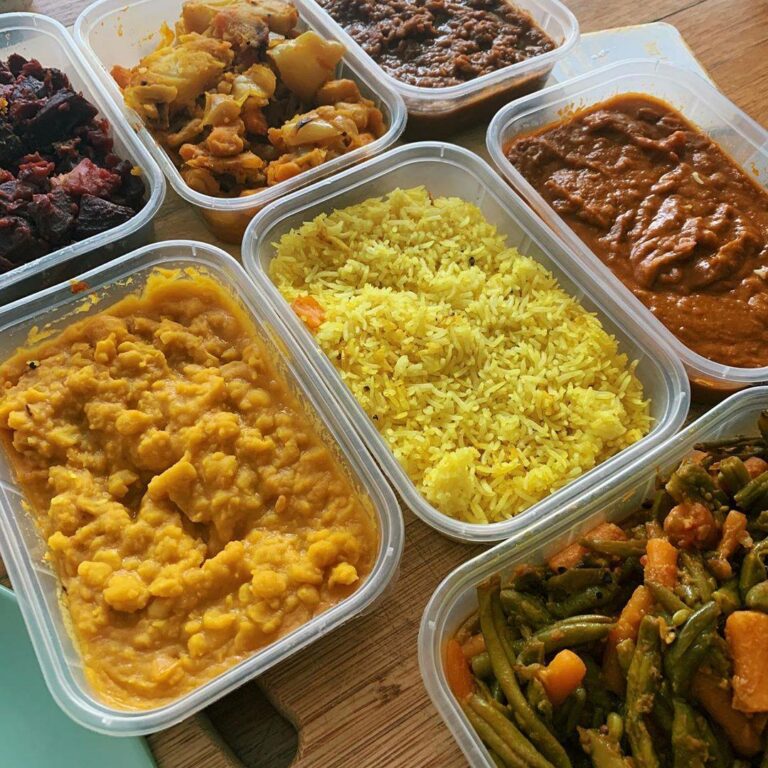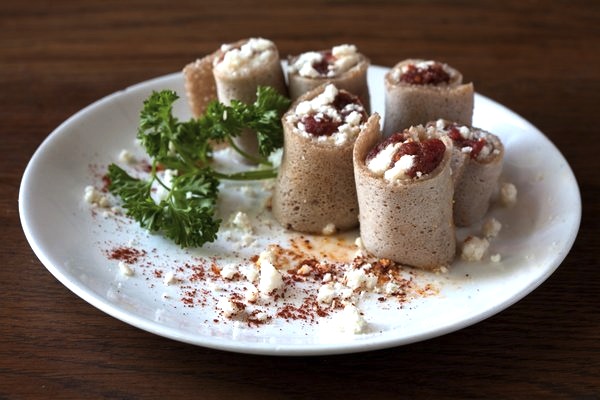Introduction: Ethiopia and Eritrea
Ethiopia and Eritrea are two neighboring countries in the Horn of Africa with a shared history and culture. They were once part of the same country until Eritrea gained independence in 1993. Despite their proximity and similarities, their cuisines have unique characteristics that set them apart from each other. Ethiopian cuisine has become more widely known and popular worldwide, but Eritrean cuisine remains a hidden gem waiting to be discovered.
Geographic and Historical Influences
The geography and history of Eritrea and Ethiopia have influenced their cuisines in different ways. Eritrea’s coastline on the Red Sea and its proximity to the Middle East have resulted in the use of more seafood and Middle Eastern spices and flavorings, such as cumin and coriander. Ethiopia’s highland terrain and long agricultural history have made it a major producer of teff, a grain that is used to make the sourdough bread called injera, which is a staple in both countries’ cuisines. Ethiopia’s historical ties to ancient Egypt and the Mediterranean also influenced its cuisine’s use of spices like cinnamon and cloves.
Staple Foods: Teff, Injera, and Tsebhi
Teff, injera, and tsebhi are three staple foods that are common in both Eritrean and Ethiopian cuisine. Teff is a gluten-free grain that is used to make injera, a spongy and sour flatbread that is eaten with almost every meal. Tsebhi is a stew made with meat, vegetables, and spices and is often served with injera. However, there are some differences in how these dishes are prepared and served in each country. For example, Eritreans tend to make their injera thinner and crisper than Ethiopians, and they often serve tsebhi in individual portions rather than family-style.
Meat and Dairy Consumption
Both Eritrean and Ethiopian cuisine use meat and dairy products, but there are differences in how they are consumed. Eritreans tend to eat more seafood and camel meat, while Ethiopians consume more beef and goat meat. In terms of dairy, Eritreans tend to use more butter and clarified butter (niter kibbeh) in their cooking, while Ethiopians use more yogurt and cottage cheese (ayib). Both cuisines also have vegetarian and vegan options, such as shiro (a chickpea or lentil stew) and tihlo (a dish made with roasted barley flour and spices).
Spices and Flavorings
Spices and flavorings are an essential part of both Eritrean and Ethiopian cuisine, but there are differences in which ones are used more prominently. Eritreans tend to use more Middle Eastern spices and herbs, such as za’atar, sumac, and basil, while Ethiopians use more African spices, such as berbere (a spice blend made with chili peppers, ginger, and other spices) and mitmita (a spicy powder made with chili peppers and spices). Both cuisines also use herbs like rosemary, thyme, and sage to add flavor to their dishes.
Vegetarian and Vegan Options
Both Eritrean and Ethiopian cuisine offer a variety of vegetarian and vegan options. In fact, many of their traditional dishes are naturally vegetarian or vegan, such as injera, shiro, and tihlo. Vegetarian and vegan dishes are especially popular during religious fasting periods, such as Lent in the Christian Orthodox Church, which is widely followed in both countries. However, it is important to note that some dishes may contain animal products, such as butter or clarified butter, so it is important to ask before ordering.
Desserts and Beverages
Desserts and beverages are an important part of both Eritrean and Ethiopian cuisine. However, they tend to be simpler and less sweet than Western desserts. Some popular desserts include baklava (a sweet pastry made with phyllo dough, honey, and nuts) in Eritrea and dabo kolo (small, crunchy biscuits) in Ethiopia. In terms of beverages, both countries are known for their coffee, which is often served with popcorn or peanuts. Eritrea also has a popular beverage called suwa, which is made with fermented barley and is similar to beer.
Conclusion: Similarities and Differences
In conclusion, Eritrean and Ethiopian cuisine share many similarities, such as the use of teff, injera, and tsebhi, but they also have distinct differences that reflect their unique histories and cultures. Eritrean cuisine tends to be more influenced by Middle Eastern and Mediterranean flavors, while Ethiopian cuisine is more influenced by African spices and flavors. Both cuisines offer a variety of vegetarian and vegan options, and their desserts and beverages are a flavorful and unique way to end any meal.


